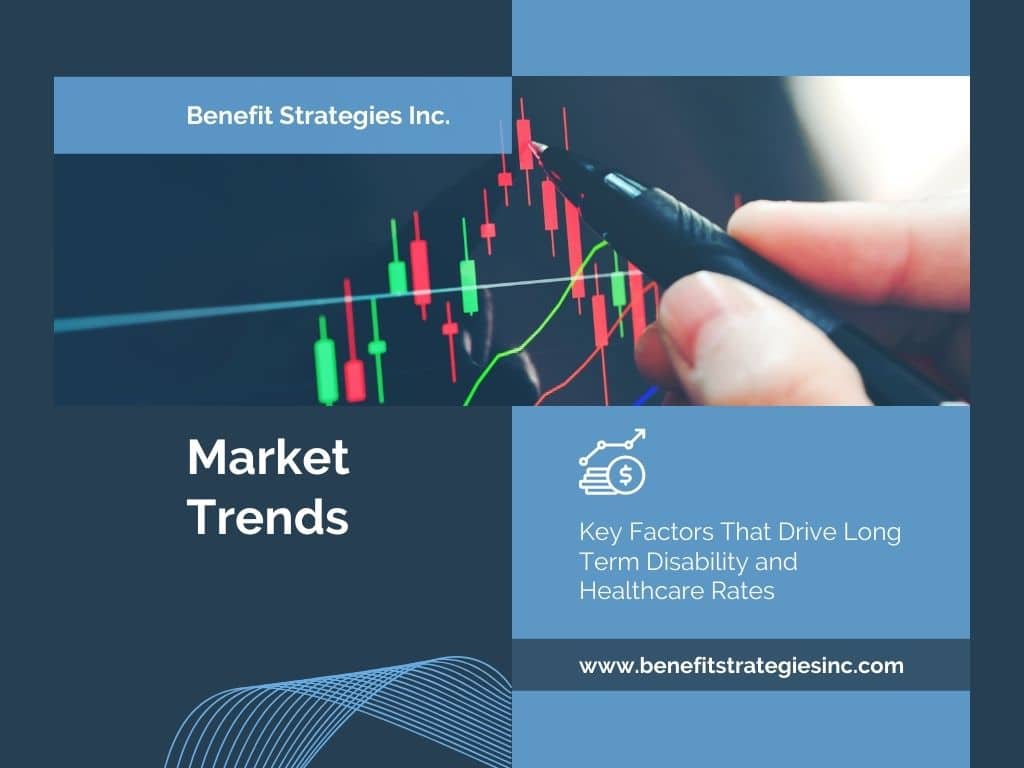Key Factors That Drive Long Term Disability and Healthcare Rates
Drug costs, dispensing fees, the state of the economy, and interest rates are a few of the variables that can drive long term disability and health care rates. Benefit Strategies specialists have compiled a list of the key factors that are contributing to increasing costs:
Long Term Disability
Long Term Disability (LTD) coverage is an important benefit for both plan sponsors and plan members. The LTD benefit provides financial security for employees in the event of a disability. In recent years, the costs associated with providing this coverage has continued to increase due to multiple factors:
- Claims incidence levels have continued to trend higher, consistent with an economic downturn. Claims are more difficult to resolve in periods of economic uncertainty.
- Mental Health issues are not only the leading causes of new disability claims, but also can develop as a secondary diagnosis to more physical conditions. These complicated claims require specialized adjudication and put pressure on claims management costs.
- Interest rates are at historical lows, resulting in lower returns on investment as well as requiring insurance companies to hold higher reserves in order to pay claimants, which push disability rates higher.

Extended Health Care
Extended Health Care benefits are a highly valued component of the overall benefit package provided to your employees. Managing the costs of these benefits is an increasing concern for many plan sponsors. We have outlined below several reasons for escalating drug costs:
- There are more drugs available than ever before, including drugs for conditions that were previously not treated or were treated surgically.
- There are many high cost medications that are introduced into the market place on a regular basis. These high cost drugs are approved and covered on most existing drug plans, without consideration for costs, which can be upwards of one million dollars per year.
- Dispensing Fees and frequency of dispensing continues to increase.
- Governments continue to cut back on their healthcare spending by transferring a greater portion to private plans and individuals. While drugs dispensed during a hospital stay are covered under the government plan, reduced inpatient time may result in higher drug costs and additional services for the employer sponsored plan.
- Cancer medications are now available orally and are no longer administered in a hospital setting. This results in a transfer of costs from the hospital to the employee.
- The overall population is aging and people are living longer with chronic conditions as a result of advanced medical therapies. In general, the older the person, the more expensive the prescription drug claims are. An older population also tends to take multiple medications and the utilization of other services and medical supplies are increased.
- The cost of Stop Loss Coverage has increased substantially over the last couple of years as a result of increased drug costs.
Do you have questions about your coverage? If so, we may be able to help. Speak with a Benefit Strategies representative today for a complementary review of your employee benefit plan, and a discussion around how we can help.



